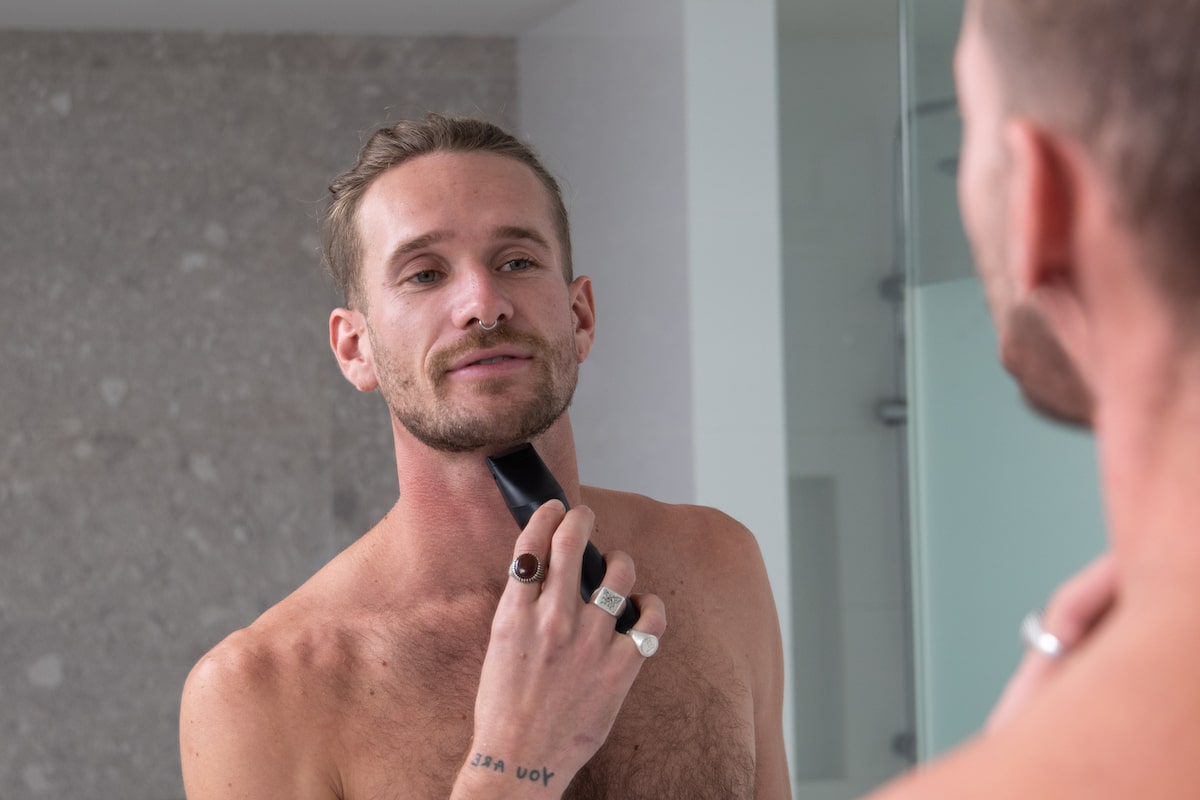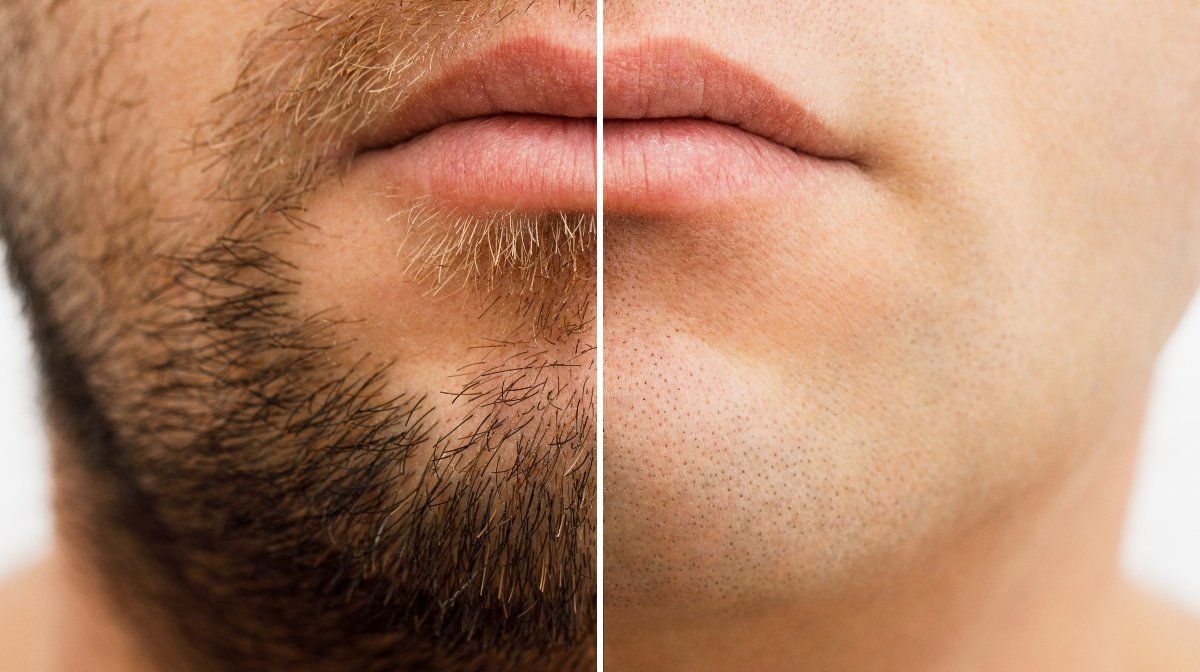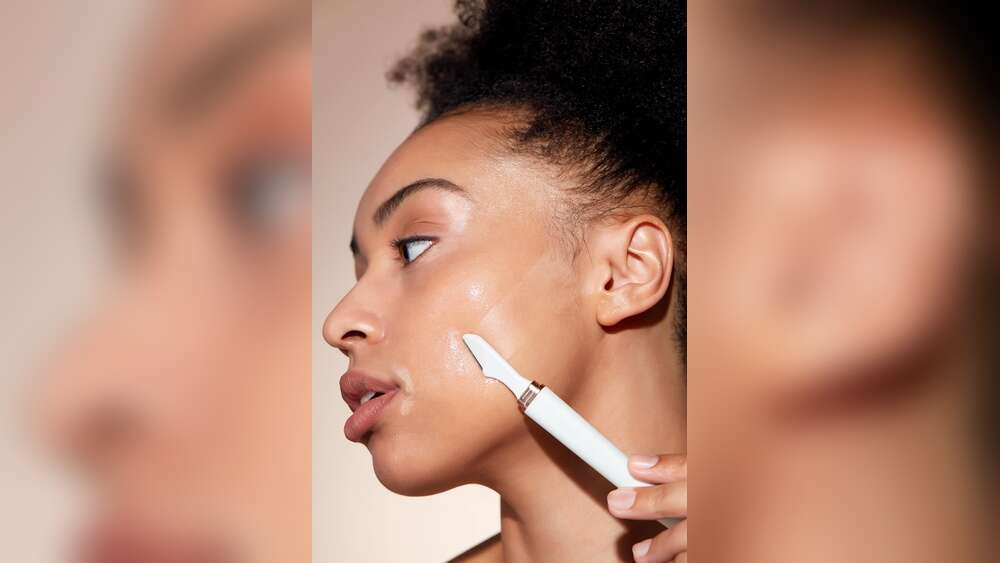Wondering how often you should shave your face? You’re not alone.
Whether you’re aiming for smoother skin, better makeup application, or just want to get rid of that pesky peach fuzz, figuring out the right shaving routine can feel tricky. Shaving too often might irritate your skin, while waiting too long can leave your face feeling dull.
The good news? There’s no one-size-fits-all answer—it all depends on your skin type, hair growth, and personal goals. Keep reading to discover how to find the perfect shaving frequency for your face, plus expert tips to keep your skin healthy and glowing every time you shave.

Credit: bakblade.com
Shaving Frequency Options
Choosing how often to shave your face depends on your skin type, hair growth, and lifestyle. Various shaving frequencies offer different benefits and suit different needs. Understanding these options helps you decide what works best for your skin and routine.
Some prefer daily shaving for a clean look every day. Others choose weekly or bi-weekly shaving to balance skin health and appearance. Monthly or occasional shaving suits those with slower hair growth or sensitive skin.
Daily Shaving Benefits
Daily shaving keeps skin smooth and clear of peach fuzz. It helps remove dead skin cells, giving your face a fresh glow. This routine can improve makeup application by creating a smooth canvas. Daily shaving may reduce the chance of ingrown hairs by preventing hair from growing too long. It works well for people with fast hair growth or those who prefer a polished look every day.
Weekly And Bi-weekly Routines
Shaving once or twice a week balances skin care and convenience. It allows time for skin to heal and prevents irritation. This routine suits most skin types and hair growth rates. Weekly shaving removes buildup of dead skin and fuzz without stressing the skin. Bi-weekly shaving is gentle and reduces the risk of dryness or redness. Many find this schedule easy to maintain and effective for smooth skin.
Monthly And Occasional Shaving
Monthly or occasional shaving fits people with slow hair growth or sensitive skin. It helps avoid frequent irritation or dryness. This option is good if you prefer a natural look most days. Occasional shaving can refresh skin before special events or makeup application. It also allows your skin to rest and recover between shaves. This routine is low maintenance and gentle on the skin.
Factors Affecting Shave Timing
Several factors influence how often you should shave your face. These factors help determine the best timing to keep your skin smooth and healthy. Understanding these elements ensures you avoid irritation and get the best results from shaving.
Personal Preference And Comfort
Some prefer shaving daily for a fresh, clean feel. Others choose weekly or bi-weekly to avoid skin irritation. Comfort plays a big role in deciding shave frequency. Listen to your skin and adjust timing to what feels best for you.
Hair Growth Rate Differences
Hair grows at different speeds for everyone. Faster growth means more frequent shaving may be needed. Slower growth allows longer gaps between shaves. Check your hair growth pattern to set a schedule that suits you.
Skin Sensitivity And Conditions
Sensitive skin needs gentler care and less frequent shaving. Conditions like acne or eczema require avoiding shaving until skin heals. Always watch for irritation or redness before deciding to shave again. Healthy, hydrated skin handles shaving best.
Best Tools For Facial Shaving
Choosing the right tools makes facial shaving easier and more effective. The tools should suit your skin type and hair texture. Using proper tools helps avoid irritation and cuts. It also improves the shaving experience and the final look.
Dermaplaning Blades
Dermaplaning blades are designed specifically for face use. They are small and very sharp. These blades remove dead skin and fine hair gently. Many prefer dermaplaning for smooth, glowing skin. It also helps makeup apply better. Use light, short strokes for best results. Replace blades often to keep them sharp and safe.
Facial Razors Vs Body Razors
Facial razors are smaller and more precise than body razors. They have finer blades to protect delicate facial skin. Body razors are bigger and less flexible. Using a body razor on the face may cause cuts. Facial razors are easier to control on small areas. They help avoid irritation and razor burn. Choose a facial razor made for sensitive skin.
Maintaining Sharpness And Cleanliness
Sharp blades cut hair smoothly without pulling. Dull blades cause discomfort and skin damage. Clean blades after every use to remove hair and skin cells. Use warm water and mild soap for cleaning. Dry blades completely to prevent rust and bacteria. Store tools in a dry place. Replace blades regularly to maintain safety and efficiency.

Credit: www.youtube.com
Skin Preparation Tips
Proper skin preparation improves shaving results and protects your skin. It reduces irritation and helps achieve a smooth shave. Follow these simple steps before shaving your face.
Cleansing And Drying Skin
Start by washing your face with a gentle cleanser. This removes dirt, oil, and bacteria. Clean skin prevents razor clogging and reduces infection risk.
Pat your face dry with a soft towel. Avoid rubbing, which can irritate the skin. Shaving on dry skin can cause less irritation for some skin types.
Using Oils And Gels For Protection
Apply a thin layer of shaving oil or gel. These products soften hair and create a smooth surface for the razor.
They also protect the skin from cuts and razor burn. Choose formulas made for sensitive skin to avoid redness or itching.
Avoiding Irritated Or Inflamed Areas
Check your skin for redness, pimples, or cuts before shaving. Avoid shaving over these areas to prevent worsening irritation.
Shaving on inflamed skin can cause pain and slow healing. Wait until your skin is calm and healthy before shaving again.
Shaving Techniques For Smooth Skin
Using the right shaving techniques is key to smooth, healthy skin. Proper methods reduce irritation and keep your face comfortable after each shave. Follow simple steps to improve your shaving routine and achieve the best results.
Gentle Strokes And Pressure
Use light, gentle strokes while shaving. Pressing too hard can cause cuts and redness. Glide the razor softly across your skin for a clean shave. Let the razor do the work, not your hand.
Safe Direction And Speed
Shave in the direction of hair growth to avoid irritation. Move the razor slowly and steadily to reduce the risk of nicks. Quick, rough movements can damage your skin. Take your time for a smoother finish.
Avoiding Cuts And Irritations
Keep your skin moisturized before and after shaving. Use a sharp, clean razor to prevent tugging and scratches. Avoid shaving over acne or irritated areas. Stop if your skin feels sore or sensitive during shaving.
Post-shave Care
Post-shave care is essential for healthy and smooth skin. Shaving can irritate your face, making it sensitive and dry. Taking good care after shaving helps your skin heal faster and look better. Proper post-shave routines reduce redness, bumps, and dryness. Follow these simple tips to keep your skin calm and moisturized after each shave.
Moisturizing With Hydrating Ingredients
Apply a moisturizer right after shaving to soothe your skin. Look for products with hydrating ingredients like aloe vera, glycerin, or hyaluronic acid. These ingredients help lock in moisture and repair the skin barrier. Avoid heavy creams that can clog pores. Use a light, non-comedogenic moisturizer for best results.
Sun Protection Importance
Shaved skin is more sensitive to sunlight. Always apply sunscreen before going outside. Choose a broad-spectrum sunscreen with at least SPF 30. Sun protection prevents irritation and dark spots caused by UV rays. Reapply sunscreen every two hours if you stay outdoors. Protecting your skin helps maintain a smooth, even tone.
Avoiding Exfoliants After Shaving
Avoid using exfoliants right after shaving. Your skin is already exfoliated and sensitive. Using scrubs or acids can cause redness and irritation. Wait at least 24 to 48 hours before exfoliating again. Gentle cleansing is enough during this time. Let your skin recover fully for the best results.
Benefits Of Regular Facial Shaving
Regular facial shaving offers several benefits beyond just hair removal. It helps maintain a fresh and clean look while improving skin health. Shaving can also enhance how your skin feels and how products work on your face. Understanding these benefits encourages a consistent shaving routine that suits your skin type and lifestyle.
Smoother Skin Texture
Shaving removes dead skin cells and fine hair, revealing smoother skin underneath. This process gently exfoliates, which can reduce rough patches and uneven skin. A smoother texture feels soft and looks more radiant. Regular shaving helps keep skin fresh and prevents buildup that causes dullness.
Improved Skincare Absorption
Removing the top layer of dead skin and peach fuzz allows skincare products to penetrate better. Moisturizers, serums, and treatments reach deeper layers and work more effectively. This means your skin can benefit more from the ingredients in your skincare routine. Better absorption leads to healthier and more nourished skin.
Flawless Makeup Application
Shaving creates a smooth canvas for makeup. Without fine hair and dead skin, foundation and powders blend easily. This prevents makeup from caking or looking patchy. Makeup stays on longer and appears more natural. Regular shaving helps achieve a polished and professional look every time.

Credit: www.gillette.co.uk
When To Skip Shaving
Knowing when to skip shaving your face is as important as knowing when to shave. Skipping shaving at the right times helps protect your skin. It prevents damage and irritation. Your skin needs time to heal during certain conditions. Shaving over sensitive or troubled skin can cause more harm than good.
Active Acne And Breakouts
Shaving over active acne can spread bacteria. It may increase redness and swelling. Avoid shaving if your skin has many pimples. Shaving can cause cuts and worsen breakouts. Let your skin calm down before shaving again.
Skin Irritation And Sunburn
Shaving irritated or sunburned skin can be painful. It may cause more redness and peeling. The skin barrier is weak during irritation and sunburn. Shaving can delay healing and increase discomfort. Wait until your skin feels normal and less sensitive.
Post-exfoliation Sensitivity
After exfoliating, your skin becomes sensitive. Shaving right after exfoliation can cause irritation. It may lead to razor burns or small cuts. Give your skin at least 24 hours to recover. This rest helps prevent damage and keeps skin healthy.
Frequently Asked Questions
How Often Should You Shave Your Face As A Female?
Shave your face based on hair growth and skin sensitivity. Most women shave weekly, bi-weekly, or monthly. Avoid shaving irritated or acne-prone skin. Shave when skin feels dull or peach fuzz affects makeup. Use gentle tools and moisturize afterward for smooth, healthy skin.
Is It Good To Shave Your Face Often?
Shaving your face often is safe if skin feels healthy and hydrated. Shave weekly or as needed to remove peach fuzz and exfoliate dead skin. Avoid shaving irritated or acne-prone skin to prevent damage. Use proper tools and moisturize afterward for smooth, radiant skin.
Do Dermatologists Recommend Shaving Your Face?
Dermatologists often recommend facial shaving to exfoliate dead skin and remove peach fuzz. Use gentle tools and avoid shaving irritated skin.
Can I Shave 2 Days After Shaving?
Yes, you can shave two days after shaving if your skin feels healthy and shows no irritation. Always use gentle strokes.
Conclusion
Finding the best shaving routine depends on your skin and hair. Some prefer shaving weekly, others less often. Pay attention to how your skin feels and reacts. Always use gentle tools and care to protect your face. Healthy skin looks and feels its best with the right habits.
Shaving can refresh your look and improve makeup application. Keep your skin clean, hydrated, and avoid shaving over irritation. Choose a schedule that fits your lifestyle and skin needs. Simple care brings smooth, glowing skin every day.

Rubel Miah is the co-founder and senior writer at MyFashionGrid, where he shares practical and expert-backed male grooming advice. With years of experience testing grooming products and perfecting men’s style routines, Rubel’s goal is to help men look sharp and feel confident—whether it’s mastering the perfect shave, finding the right haircut, or upgrading their daily grooming game. When he’s not writing, you’ll find him experimenting with new razors or exploring the latest trends in men’s fashion and self-care.

